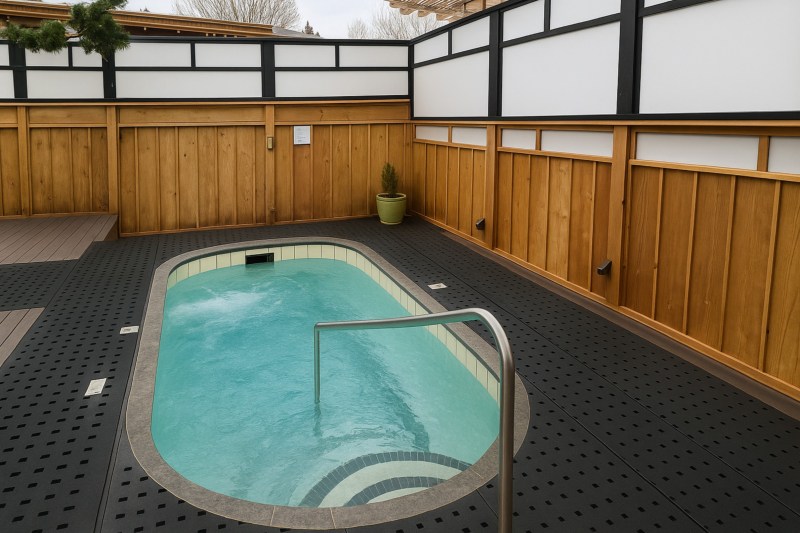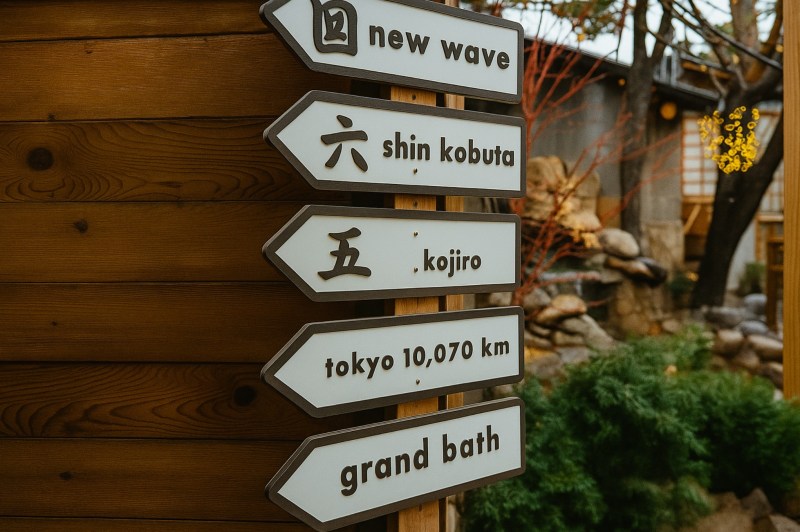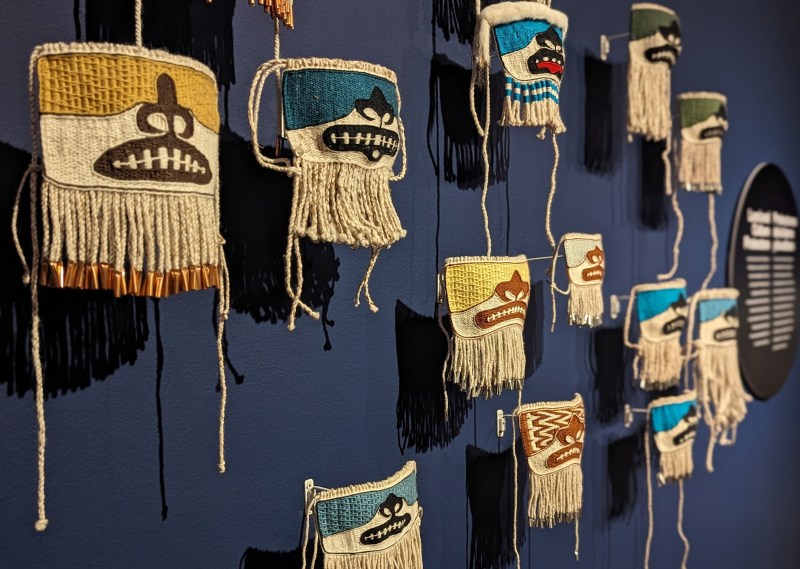Santa Fe’s adobe-contoured city is densely packed with a nearly unbelievable amount of attractions within its modest 37.4 square miles. Grassroots galleries like Meow Wolf, renowned institutions at Museum Hill, and colorful vendors at The Santa Fe Plaza mean miles of walking and full days for visitors. So when you’re ready for a break from the hustle and bustle, do what I did—drive up the ponderosa pine-filled Sangre de Cristo Mountains to Ten Thousand Waves Spa.
The Japanese-inspired wellness center sits 8,000 feet above sea level, just 20 minutes from downtown Santa Fe, and the main attraction is the collection of onsen-style spring-fed baths and saunas. It’s a year round destination, and in winter, I was privy to fluffy flakes of snow dissolving over the steaming tubs like a slow-motion dream.
I’ll guide you through each element of this mountainside escape, with suite details, amenities, and other things to do onsite. And if you want to make a full day of it, you’ll find a sample itinerary for a luxurious overnight stay below.
A private Japanese onsen hidden in the high desert forest

Half the fun of visiting 10,000 Waves Spa is the scenic drive up the Santa Fe Hills. The retreat sits at the southernmost part of the Rocky Mountain range, adjacent to the Santa Fe National Forest. The journey is perfectly paired with a nearby hike, since the highly mineralized bath waters soothe achy muscles.
You can book one of eight private bath areas, equipped with indoor and outdoor amenities including a hot bath, cold plunge, cold shower, dry sauna, walk-in sit-down shower, changing room, and luxurious bathroom. On select days you can book a communal soak, and anyone staying at the inn or booking a massage is welcome to use it.
My tension dissolved as I was led to my private Kojiro suite. I rinsed off in my walk-in shower, dressed in my provided slippers and robe, and entered my private outdoor utopia. The spring-fed bath was an ample size and crystal clean, thanks to the resort’s state of the art filter systems. The overall design was simple and warm, perfectly complimenting the surrounding juniper and pinon trees.
I followed the traditional bathing order for the Japanese onsen, starting with the hot tub, then dry sauna, a chillingly cold shower, and an invigorating dip in the cold plunge. Feel free to linger after your session, perhaps mindfully pacing the grounds, or soaking your feet next to the waterfall-fed koi pond.
Public, private, and culinary on-property amenities

The 20-acre property has diverse offerings onsite, making it an all-day or overnight affair for the utmost relaxation and luxury. The best compliment to your soak is a massage or facial, and I recommend the signature Japanese Shiatsu treatment for a full tension release and circulation boost.
Replenish at the Izanami restaurant, a James Beard nominee serving fresh sashimi, crisp libations, and Ishiyaki-style small plates. Don’t miss the stone-cooked wagyu beef, self-cooked on a 500 degree rock to the doneness of your choice. Health forward plates boast rich miso glazes, fresh local produce, and delicately constructed deserts like matcha tiramisu.
Savor every moment in the mountainside at Houses of the Moon, the traditional Japanese ryokan (inn) just steps from the spa. Four varieties of rooms range from basic and distraction-free to elegant and spacious. Order premium sake and a charcuterie plate to your room for a romantic night in or call the concierge for hiking recommendations to make the most of your stay.
Pull all of these amenities together and you get something like the following sample itinerary:
- 1:00 PM: Hike in the nearby Santa Fe National Forest
- 3:00 PM: Indulge in a shiatsu massage at Ten Thousand Waves
- 5:00 PM: Spend 90 minutes in your private bath suite of choice
- 7:30 PM: Enjoy dinner and drinks at Izanami
- 9:00 PM Relax in your room at Houses of the Moon inn
- 7:30 AM: Wake up to a bento box breakfast
- 8:30 AM: Soak in the communal Grand Bath and visit the gift shop before departing
This agenda isn’t a high stress checklist, but rather a full self-care circuit, and you can take or leave whichever bits appeal to you. The spa’s flexible and diverse options make this an accessible spot for anyone visiting Santa Fe, while holding an air of luxury with its breathtaking views framed by well-crafted wood and adobe.
Nearby activities to complete your Santa Fe trip

The broader Santa Fe region has plenty to explore, inviting visitors to dabble in its history, dynamic art scene, indigenous culture, and stunning southwestern terrain. For every moment of bliss you experience in Ten Thousand Waves spa, there’s a complimentary adventure to be had.
I recommend these stops during your time in “The City Different”:
- Stroll Canyon Road: Perfect for people-watchers and art-lovers who want to tour over 100 galleries and boutique shops boasting the iconic Southwestern style
- Spend a day at Museum Hill: A cluster of museums are easily accessible in this section of town, including the Museum of International Folk Art and the Wheelwright Museum of the American Indian
- See the Ohkay Owingeh Pueblo: History buffs can visit a local Indigenous Pueblo just 25 miles north of the city
- Tour the eco-friendly Earthship Homes: Roadtrippers can extend their trip and visit the self-sufficient eco homes near Taos, constructed from natural materials and based on permacultural design.
- Explore the Original Meow Wolf: Turn your world upside down at the House of Eternal Return, a mind-bending art installation that visitors can walk through and interact with.
The unexpected tranquility of Ten Thousand Waves Spa is a sanctuary amongst the southwestern high desert, boasting the native landscape while transporting guests to the smokey hills of Japan. Whichever attractions you plan on enjoying during your visit, make sure to take a pause at the spa.




